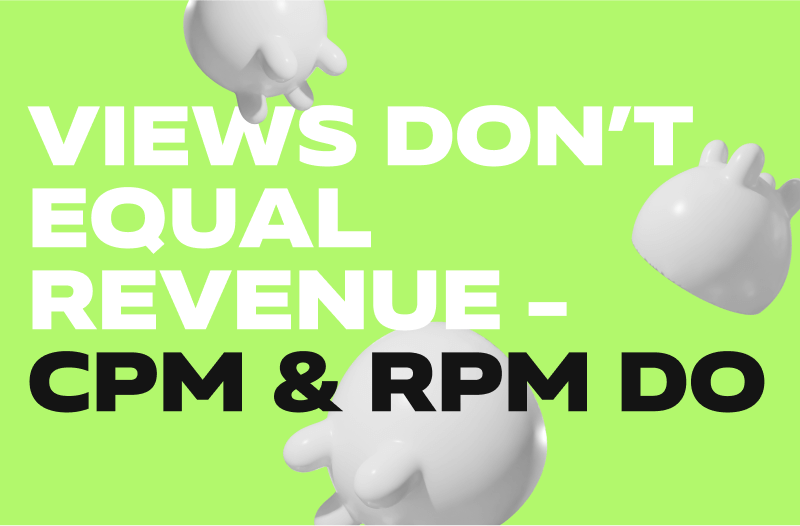On YouTube, two key metrics will tell you how your content performs financially: CPM and RPM. One reflects how much advertisers are willing to spend to reach your audience, the other shows how much of that spend actually lands in your pocket.
In this guide, we break down what CPM and RPM really mean, how they impact your earnings, and what creators do to raise both. Let’s break it down.
What is CPM on YouTube and How to Calculate It
CPM on YouTube stands for Cost Per Mille, which literally means 'cost per thousand views.' It’s the rate advertisers are willing to pay per 1,000 ad impressions on your YouTube videos.
Think of CPM as the price tag on your audience’s attention. The higher your CPM, the more valuable advertisers consider your viewers.
If your CPM is high, you’re in a “premium” niche (like finance, tech, or business). Lower CPMs are typical in entertainment, gaming, or lifestyle content, where there’s more volume but less targeted intent.
YouTube CPM Calculator
The average CPM on YouTube ranges widely. To find your CPM: CPM = (Total Ad Revenue ÷ Number of Ad Impressions) × 1,000
For example: If advertisers paid $200 for 50,000 ad impressions, your CPM would be: (200 / 50,000) x 1,000 = $4.00
That means advertisers are spending $4 to show their ad 1,000 times on your content.
Thus, CPM is what advertisers pay, not what you take home. YouTube splits that revenue with you (usually 55% to you, 45% to YouTube). That’s why your actual earnings are shown through RPM, which we’ll cover next.
Still, tracking your CPM helps you:
- Understand which videos attract higher-paying ads;
- Spot trends in advertiser demand;
- Adjust your content strategy toward more lucrative niches;

What is RPM on YouTube and How to Calculate It
RPM stands for Revenue Per Mille. It shows how much you actually earn per 1,000 video views, not how much advertisers pay, but how much ends up in your YouTube wallet.
Unlike CPM, which reflects advertiser spend, RPM gives you a creator-focused metric that includes all revenue sources, not just ad impressions.
What’s included in RPM
- Ad revenue (after YouTube’s cut);
- Channel memberships;
- Super Chats and Super Stickers;
- YouTube Premium payouts;
- Merchandise shelf (if enabled);
- And any other monetized features linked to your channel;
This makes RPM the most accurate measure of how much you’re earning for every 1,000 views on your channel.
Why RPM matters
It reflects:
- How well you monetize your audience;
- How effectively you use YouTube features like Super Chats, memberships, or merch;
- What portion of the ad spend you’re actually taking home;
RPM gives you a clear, actionable view of your income, making it the most important metric for revenue analysis.
Youtube RPM Calculator
Use this formula: RPM = (Total Revenue ÷ Total Video Views) × 1,000
For example: If you earned $150 from 30,000 total views, your RPM is: (150 / 30,000) x 1,000 = $5.00.
That means you’re earning $5 for every 1,000 views, regardless of how many ads were shown or clicked.
Fund Your Next Move, Before YouTube Payday
Try the free MilX app and unlock up to 6 months of your earnings today. Turn your YouTube views into upfront cash and skip the wait. With MilX Active Funds, the money’s already yours.
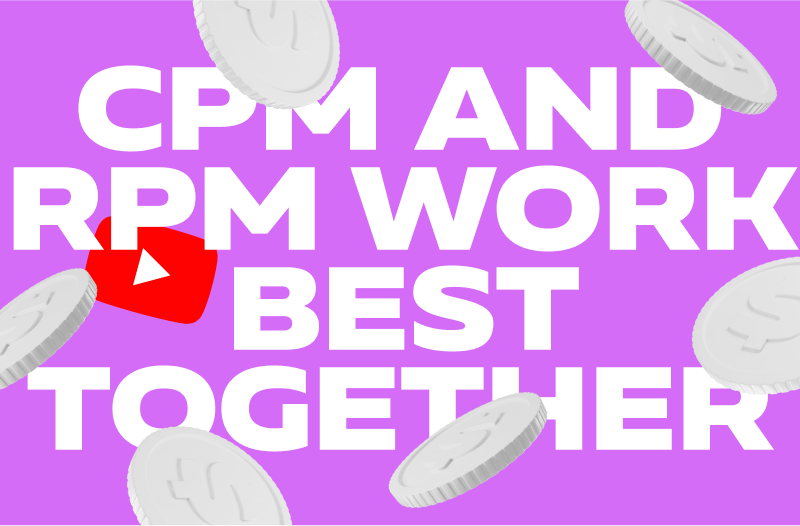
CPM vs RPM YouTube Examples
Let’s break down how CPM and RPM work in the real world with a few clear examples that show how different content strategies, audiences, and formats can impact your earnings, even with similar view counts.
Example 1: The Niche Tech Tutorial Channel
This channel offers in-depth tutorials on software tools and productivity hacks, aimed at a U.S. audience of freelancers and small business owners.
- CPM: $12.00-$15.00;
- RPM: $6.50-$8.00
Thanks to long videos (10-15 minutes), clear topic targeting, and viewers who actually watch through, the creator is able to run multiple ads and monetize through affiliate links and Premium views.
Takeaway: Even without millions of views, a focused niche and strong retention can bring in serious RPM.
Example 2: The Global News Recap Channel
A team creates short daily news updates focused on trending global headlines. They publish consistently and have a large international following.
- CPM: $5.00–$6.50;
- RPM: $1.80–$2.50;
Their content is advertiser-friendly and draws decent CPM, but short watch times (1-2 minutes on average) limit how many ads YouTube can serve. Plus, they’re not leveraging features like memberships or livestream Super Chats.
Takeaway: Even high CPM won’t boost revenue if viewer engagement is shallow.
Example 3: The Deep-Dive Educational Channel
A solo creator produces long-form explainers on socio-political issues and modern history, mostly for a North American and European audience.
- CPM: $8.00–$9.50;
- RPM: $7.20–$9.00;
Viewers binge-watch 20+ minute videos, engage in comments, and support via channel memberships and YouTube Premium. In some cases, RPM exceeds CPM, thanks to diversified income streams.
Takeaway: When your audience sticks around and supports you directly, your content becomes far more profitable, even at moderate CPMs.
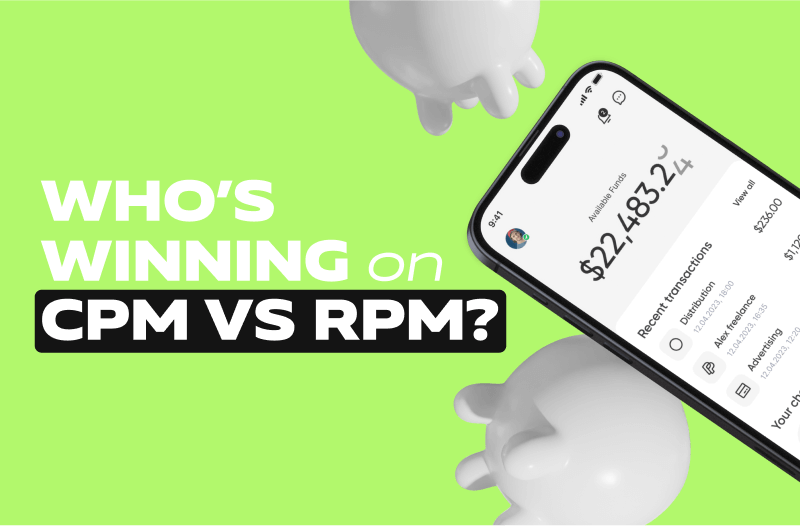
Your money. Your rules
Your money. Your rules. Get paid in USD, EUR, BTC, USDT, or any of 40+ methods. MilX gives you full control, no middlemen, no delays. Download MilX for free.
What Affects CPM and RPM?
Both CPM and RPM can fluctuate wildly depending on a mix of factors. Some you can control, others you can only adapt to. Understanding what impacts these metrics helps you make smarter content and monetization decisions.
Audience Location
Advertisers pay more to reach viewers in countries with strong buying power.
- Higher CPM/RPM: United States, Canada, UK, Australia, Germany;
- Lower CPM/RPM: India, Southeast Asia, Latin America (though growing);
If your content reaches a global audience, expect mixed CPMs, but focus on retaining viewers in premium regions for better revenue.
Niche and Content Type
Your niche can make or break your CPM. Advertisers love niches where viewers are ready to spend money or make big decisions. Here are the highest CPM YouTube niches.
Disclaimer: These numbers reflect general patterns, not hard rules. CPM and RPM rates vary across niches and can change over time based on trends, seasonality, and ad demand.
|
High-CPM niches |
Low-to-Medium CPM niches |
|
Finance & Investing |
Pranks & Comedy |
|
Tech & Gadgets |
Gaming let's plays |
|
Education (STEM) |
General vlogs & Lifestyle |
|
Real estate |
DIY or Daily Routines |
|
B2B & Software |
Reaction Videos |
Explore YouTube CPM rates by niche to pick a profitable path and if you’re in a low-CPM niche, focus on boosting RPM by adding memberships, merch, or affiliate links.
Seasonality
Q4 (Oct–Dec) is the golden quarter, advertisers pour in money for the holidays.
Expect:
- Spikes in CPM and RPM during Black Friday, Cyber Monday, Christmas;
- Drops in January (many call it the "CPM crash");
Planning high-performing content around seasonal peaks can maximize earnings per view.
Viewer Demographics
Age, gender, income level, and even viewing behavior matter.
Advertisers love:
- Viewers aged 25-44 with purchasing power;
- Engaged viewers who watch full videos and interact;
- Niche audiences with specific needs (e.g., young parents, freelancers, students);
More relevant viewers = better ad targeting = higher CPM.
Video Length and Engagement
Longer videos (8 minutes or more) allow multiple ad placements, boosting both CPM and RPM.
Engagement also matters:
- High watch time = more ads shown;
- Strong CTR (click-through rate) = higher ad demand;
- Good retention = better placement in YouTube’s algorithm, attracting more advertisers;
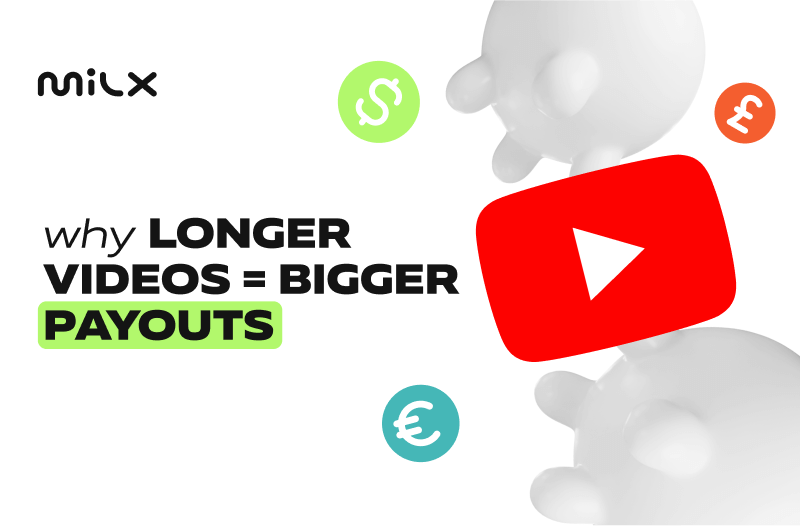
How to Increase RPM on YouTube
Once again, RPM reflects how well you monetize your audience across all streams, not just ads. Thus, if your RPM feels low, don’t just chase views, optimize how those views make money. Here’s how to boost your RPM effectively.
Create Longer Videos (8+ Minutes)
Why does it matter? Videos over 8 minutes let you enable mid-roll ads, not just pre-rolls. This allows multiple ad placements per video, which means:
- More monetized impressions;
- Higher total ad revenue per viewer;
- Even a small boost in ad frequency can make a big difference in RPM.
Monetize Every Available Feature
Ad revenue is just one stream, YouTube offers more ways to earn:
- Channel memberships (recurring monthly income);
- Super Chats & Super Stickers (great for livestreams);
- YouTube Premium revenue (paid views without ads);
- Merch shelf (if eligible)
Enable and promote these features to capture value from every type of viewer, not just those who watch ads.
Transfer Funds with 0% Fees
MilX P2P services lets you send money to friends, freelancers and family, instantly, globally, with zero transfer fees. Download MilX for free.
Target High-Paying Regions
Viewers in countries like the US, Canada, UK, Australia, and Germany attract higher-paying ads. How to attract them:
- Use English-language content (if relevant);
- Cover globally appealing or region-specific trending topics;
- Add relevant keywords and geotags in your titles, descriptions, and tags;
Even a partial shift in audience geography can noticeably raise your RPM.
Increase Watch Time and Engagement
YouTube rewards creators who keep viewers watching, and so do advertisers.
Ways to do this:
- Hook viewers in the first 15 seconds;
- Use storytelling or teasers to retain attention;
- Add strong calls to action to like, comment, or stay until the end;
More watch time = more ads shown = higher RPM.
Diversify Your Revenue Outside of Ads
Even if CPM is low, you can increase RPM by bringing in non-ad earnings:
- Affiliate links and sponsored mentions;
- Drive traffic to external platforms (like Patreon or courses);
- Use pinned comments or video overlays to promote offers;
Follow YouTube’s Advertiser-Friendly Guidelines
You can’t earn premium RPM if your content gets flagged as limited or no ads.
Avoid:
- Excessive profanity;
- Controversial or sensitive topics without proper context;
- Misleading thumbnails or metadata;
- Unclear disclosures for sponsored content;
Stay green-lighted by YouTube’s systems and you’ll be eligible for better-paying ads more often.
Post During Ad-Heavy Seasons
Timing matters. Advertisers spend more when:
- Budgets reset (Q1 bump in January);
- Campaigns launch (spring/summer product releases);
- Holidays hit (Q4: Black Friday, Christmas, New Year);
Remember that Q4 is the biggest RPM spike of the year. Create binge-worthy content leading into October-December and keep your channel active when advertisers are pouring money into placements.
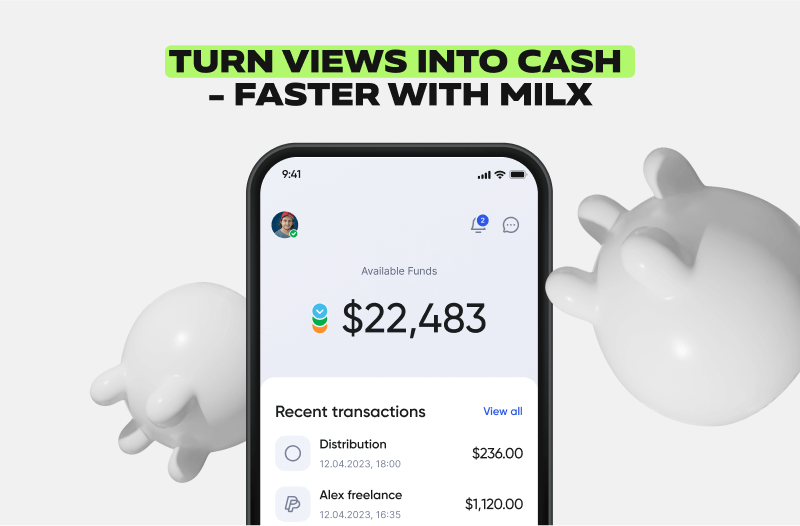
Your Views Earn. MilX Delivers Cash
Views don’t pay the bills if your earnings are stuck in limbo. YouTube’s monthly payout cycle can feel painfully slow. That’s where MilX steps in. It’s a payout platform built for creators who want speed, payment flexibility and the lowest transfer fees.
With MilX, you can:
- With MilX, you can cash in your YouTube income ahead of time.
- Choose how you get paid. USD, EUR, BTC, USDT, or 40+ global currencies, crypto or fiat, your call.
- Fuel your growth with up to 6 months of future earnings. Perfect for funding content, gear upgrades, or ad campaigns.
- Automate zero-fee transfers to editors, freelancers, or partners, no delay.
If RPM shows you what you earn, MilX helps you get it - faster.

